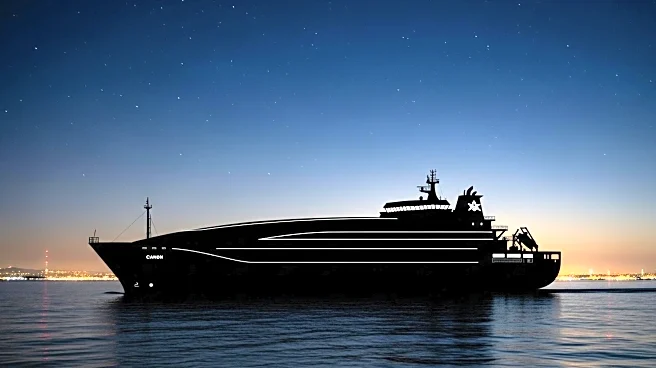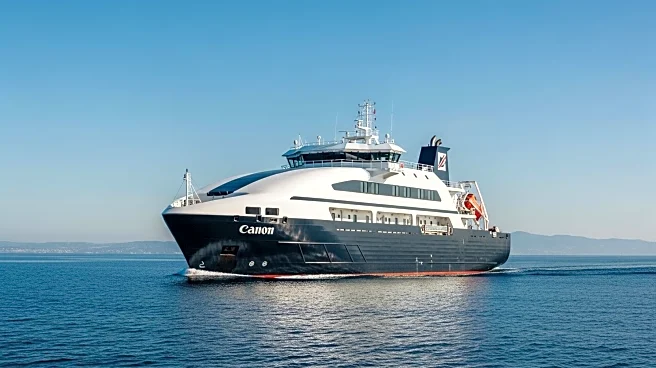What's Happening?
The Baltic Exchange's dry bulk sea freight index, which tracks the rates for vessels transporting dry bulk commodities, experienced a decline on Monday. The index, which includes rates for capesize, panamax, and supramax vessels, fell by 39 points to 2,220 points. Specifically, the capesize index saw a drop of 103 points to 3,524 points, with average daily earnings for these vessels decreasing by $848 to $29,228. This decline is attributed to reduced demand for steel and increased inventories at Chinese ports, impacting iron ore futures prices. Additionally, the panamax vessels, which typically carry 60,000-70,000 tons of coal or grain, saw their average daily earnings fall by $126 to $16,358. The supramax index also decreased by 1 point to 1,478 points, marking its lowest level since September 9.
Why It's Important?
The decline in the Baltic Exchange's dry bulk sea freight index is significant as it reflects broader trends in global shipping and commodity markets. The reduction in vessel rates can impact shipping companies' profitability and influence global trade dynamics, particularly in the transportation of essential commodities like iron ore and coal. The decrease in demand for steel and the accumulation of inventories at Chinese ports suggest potential slowdowns in industrial activity, which could have ripple effects on global economic growth. Shipping companies may face financial pressures, leading to potential cost-cutting measures or strategic shifts in operations.
What's Next?
If the trend of declining vessel rates continues, shipping companies might need to reassess their operational strategies to mitigate financial losses. This could involve renegotiating contracts, adjusting fleet deployment, or exploring alternative markets. Additionally, stakeholders in the steel and coal industries may need to address the underlying causes of reduced demand and inventory buildup to stabilize market conditions. Monitoring these developments will be crucial for businesses and policymakers to anticipate and respond to potential disruptions in global trade.
Beyond the Headlines
The decline in vessel rates may also prompt discussions on the sustainability and efficiency of global shipping practices. As economic pressures mount, there could be increased interest in adopting greener technologies and optimizing supply chain logistics to reduce costs and environmental impact. This shift could lead to long-term changes in industry standards and practices, influencing how goods are transported worldwide.










